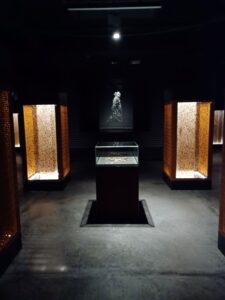 After the Soviets entered the territory of the Second Polish Republic, some 250,000 Polish soldiers were taken prisoner. From among them, the NKVD selected almost 15,000 officers of the Polish Army and Border Protection Corps, as well as officers of the State Police, Border Guard and Prison Guard who had been called up to the front, and – contrary to all international conventions – decided that they “posed a threat to the newly introduced order” in the occupied territories. They were therefore detained in camps in Kozelsk, Starobilsk and Ostashkov.
After the Soviets entered the territory of the Second Polish Republic, some 250,000 Polish soldiers were taken prisoner. From among them, the NKVD selected almost 15,000 officers of the Polish Army and Border Protection Corps, as well as officers of the State Police, Border Guard and Prison Guard who had been called up to the front, and – contrary to all international conventions – decided that they “posed a threat to the newly introduced order” in the occupied territories. They were therefore detained in camps in Kozelsk, Starobilsk and Ostashkov.
As the indoctrination carried out on them – aimed at using them for future political purposes – had failed, the head of the NKVD, Lavrentiy Beria, decided to solve their case radically. On 2 March 1940, he sent a proposal to the highest authorities of the USSR to execute the detainees. Three days later, the proposal was accepted. On 3 April 1940, the first “death transport” of Polish prisoners of war set off from the Kozelsk camp. The Soviets killed them with shots to the back of the head and buried the bodies of the murdered in mass graves.
In this way, some 22,000 officers of the army and other uniformed services, as well as representatives of the Polish elite selected from prisoners, lost their lives. They were buried in Katyn Forest, Miednoye, Bykivnia and Piatichatky, and probably Kuropaty. Lieutenant Stanisław Swianiewicz, a survivor of the crime, recalled that the prisoners of war would disembark from the train into a lime-whitened bus containing about 30 people, escorted by armed NKVD soldiers. The bus would drive off deep into the forest and return empty after about 45 minutes. As Swianiewicz recalled years later, “it never occurred to me that this could be an execution!”
Although information about the mass murders of Polish prisoners of war reached the public in 1943 via German radio, the Soviets denied that they were guilty of the crime. It was only after the collapse of the USSR in 1992 – more than half a century later – that the then President of the Russian Federation, Boris Yeltsin, admitted who was to blame for the massacre. The Russians also handed over copies of selected documents concerning the “Katyn Massacre”; however, to this day neither the perpetrators nor those who gave the orderers have been punished.
Photo: The Katyń Memorial. A part of the main exhibition at the Sybir Memorial Museum



